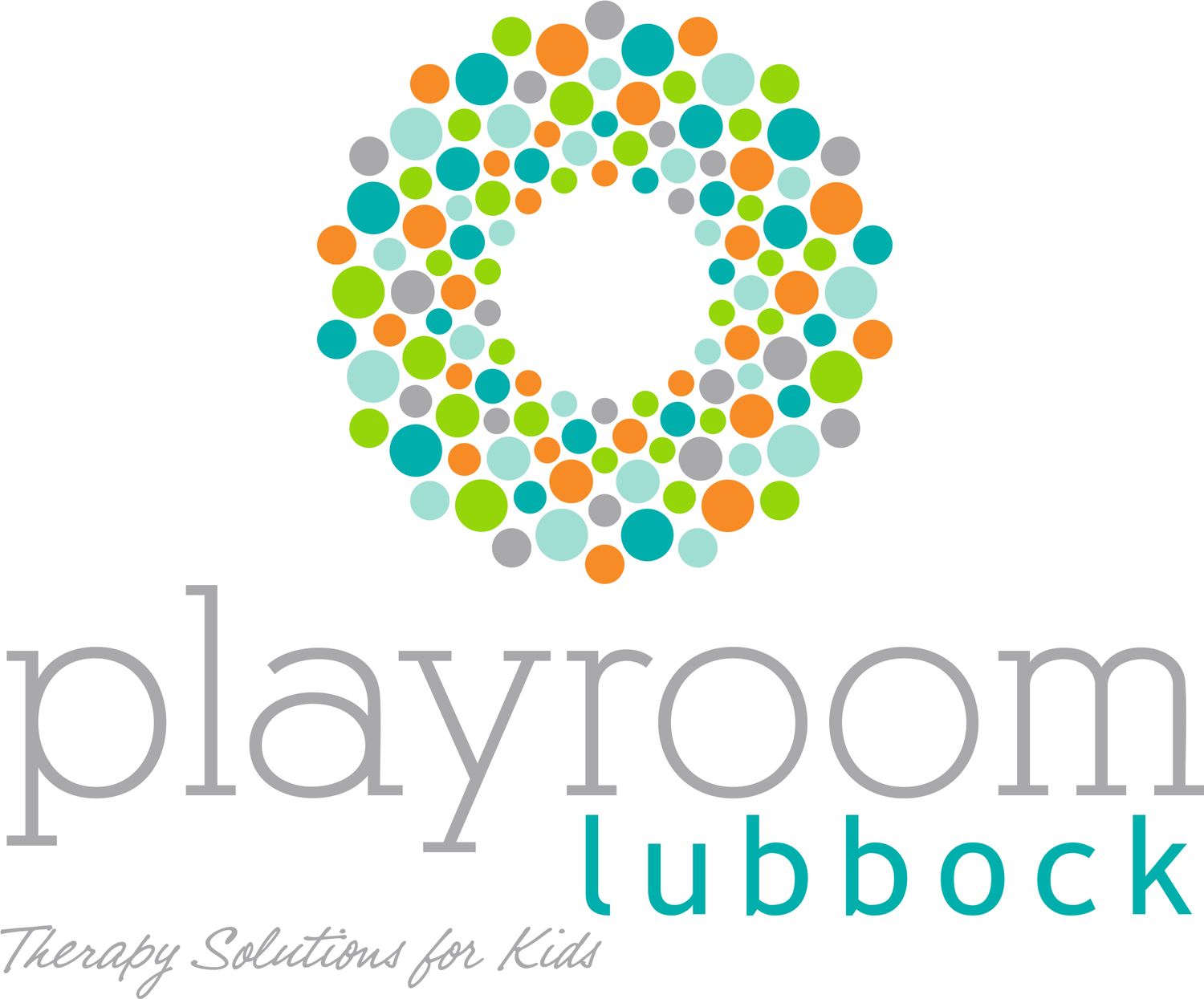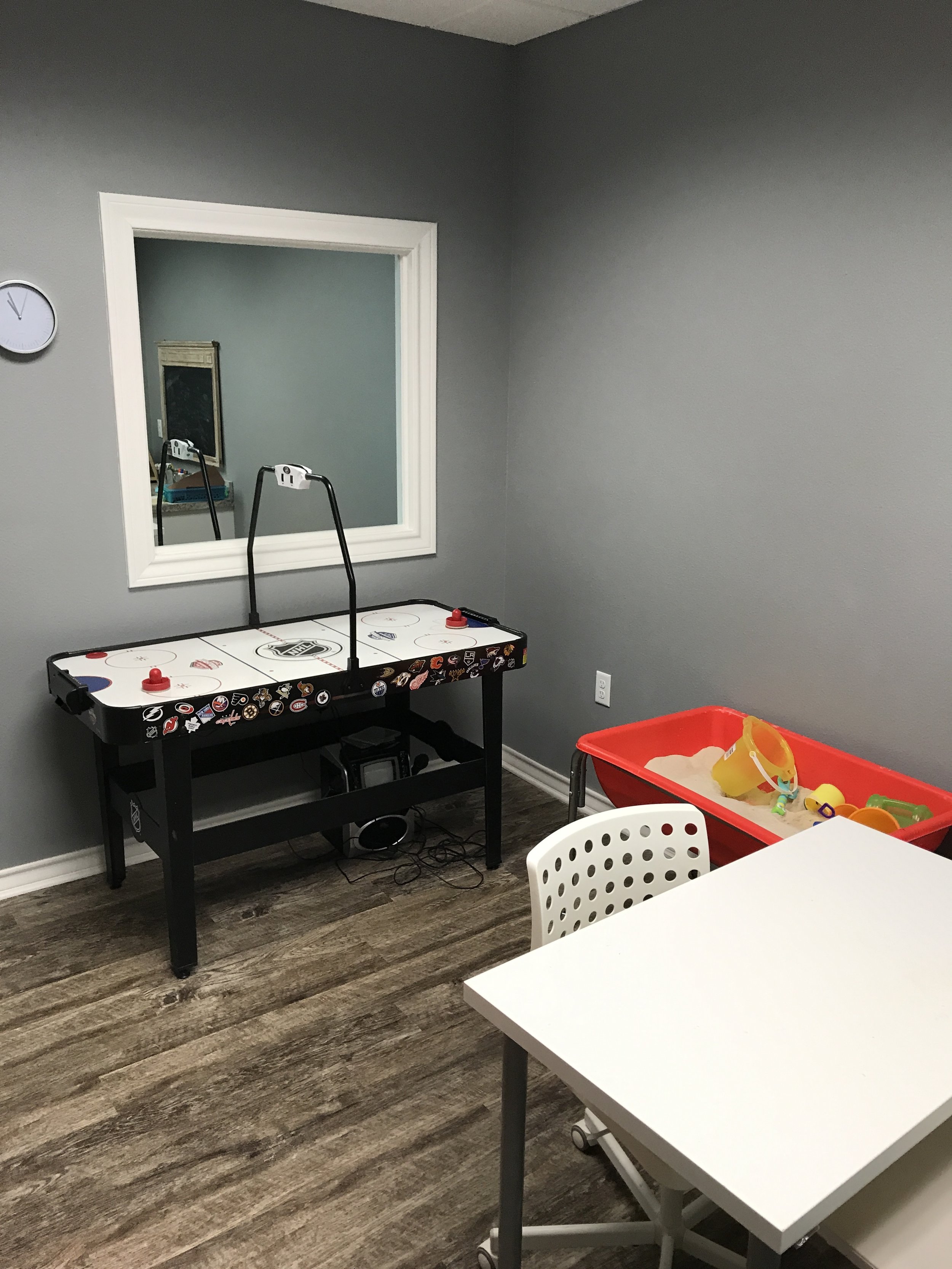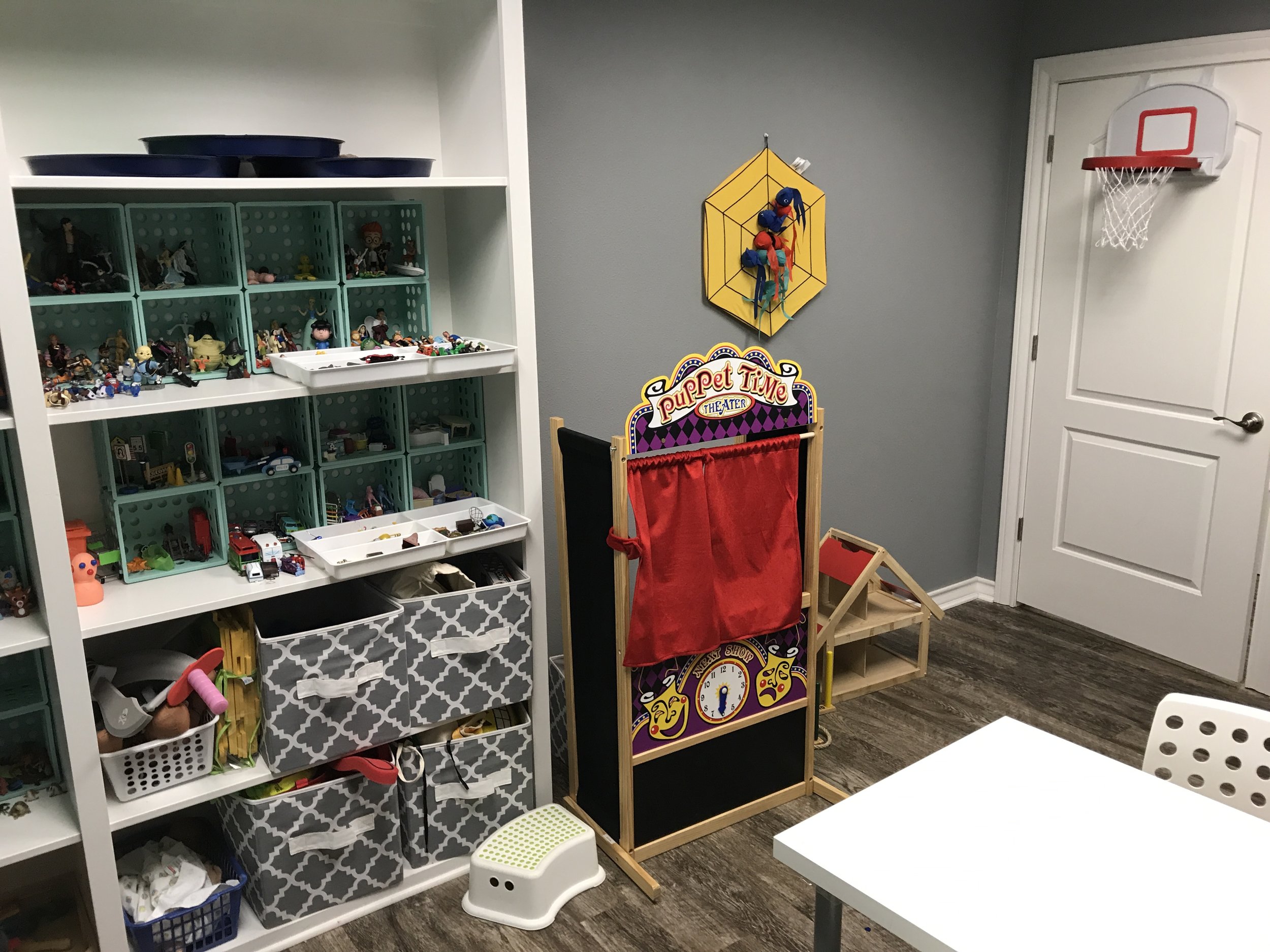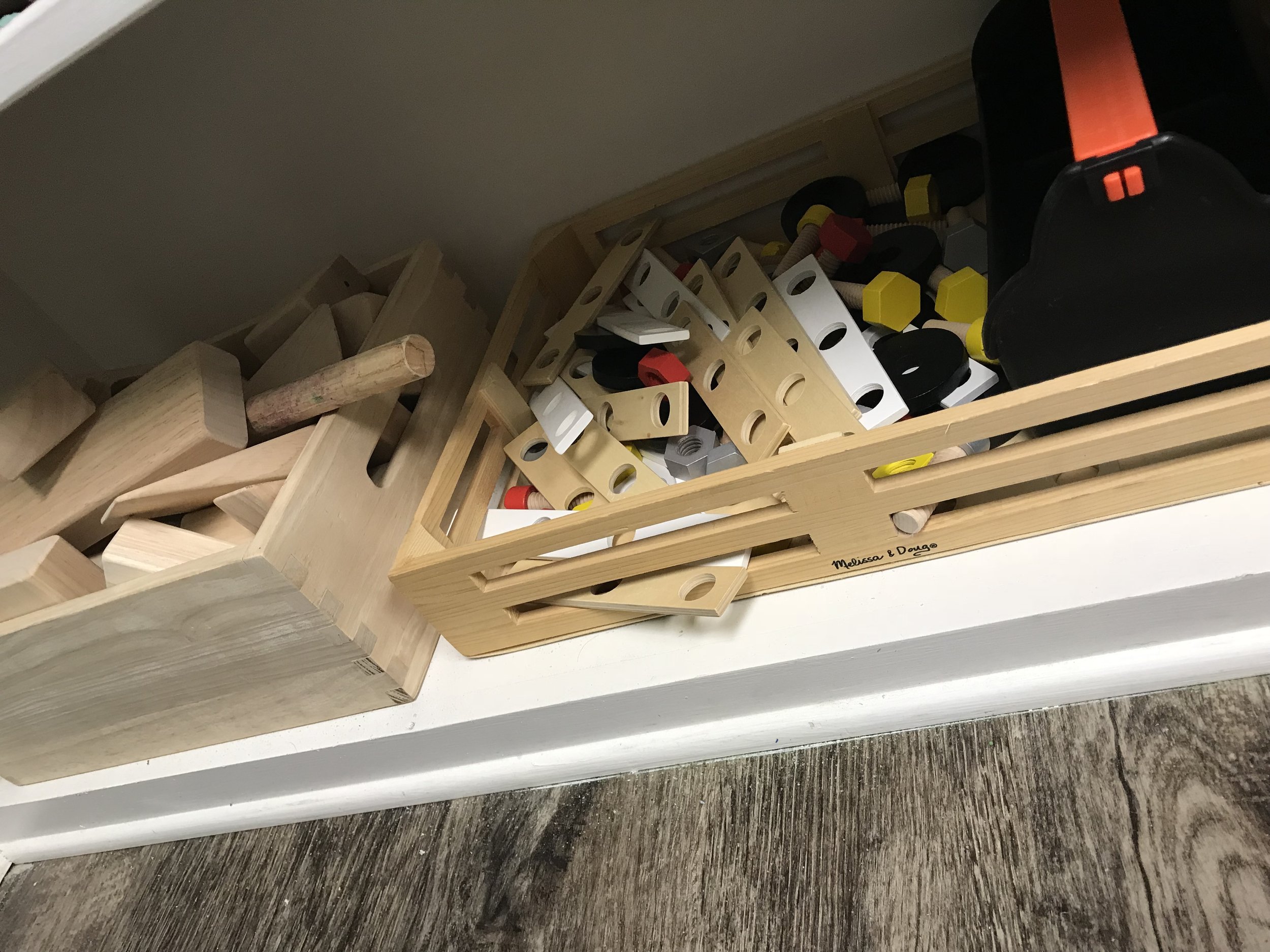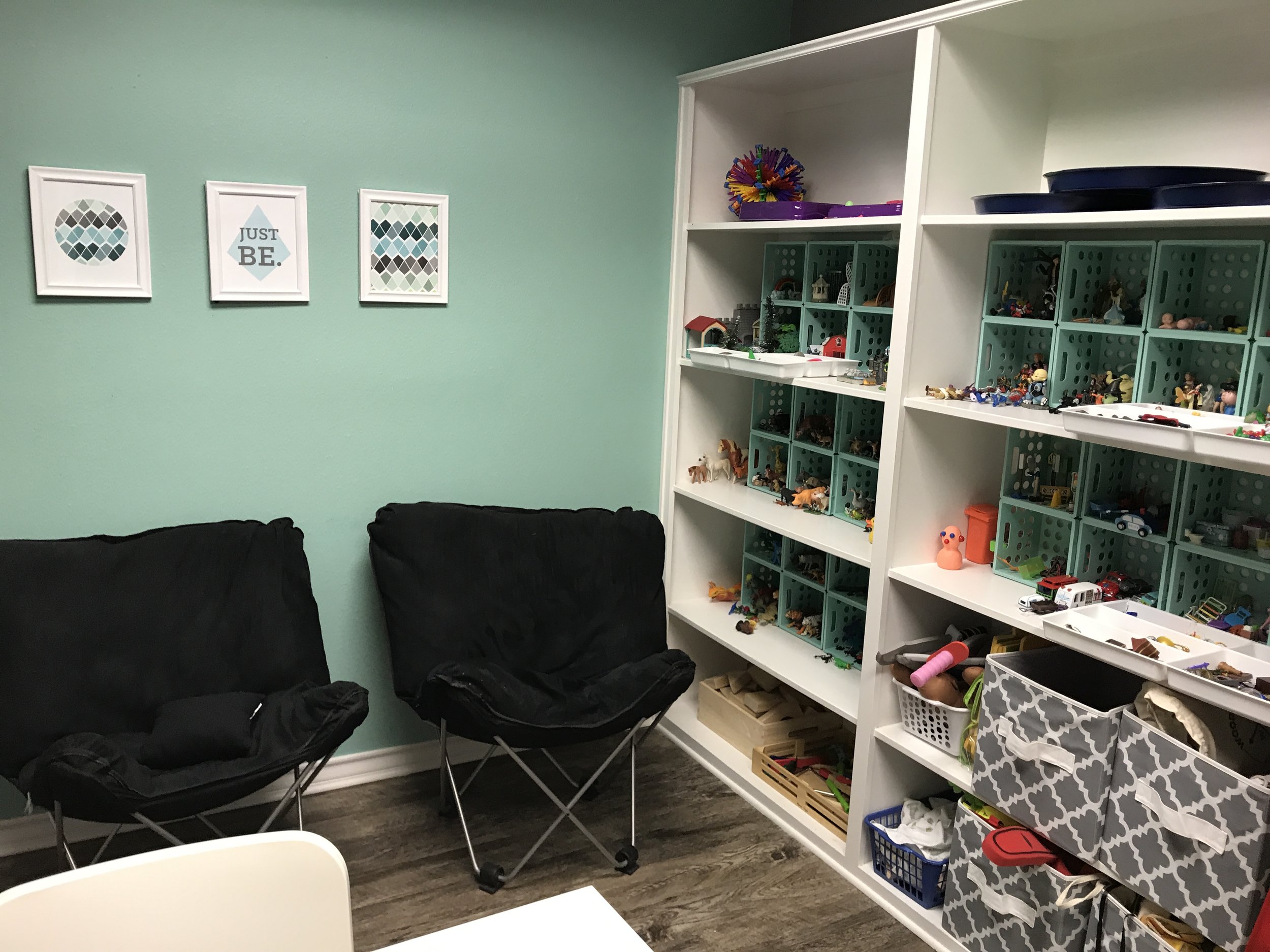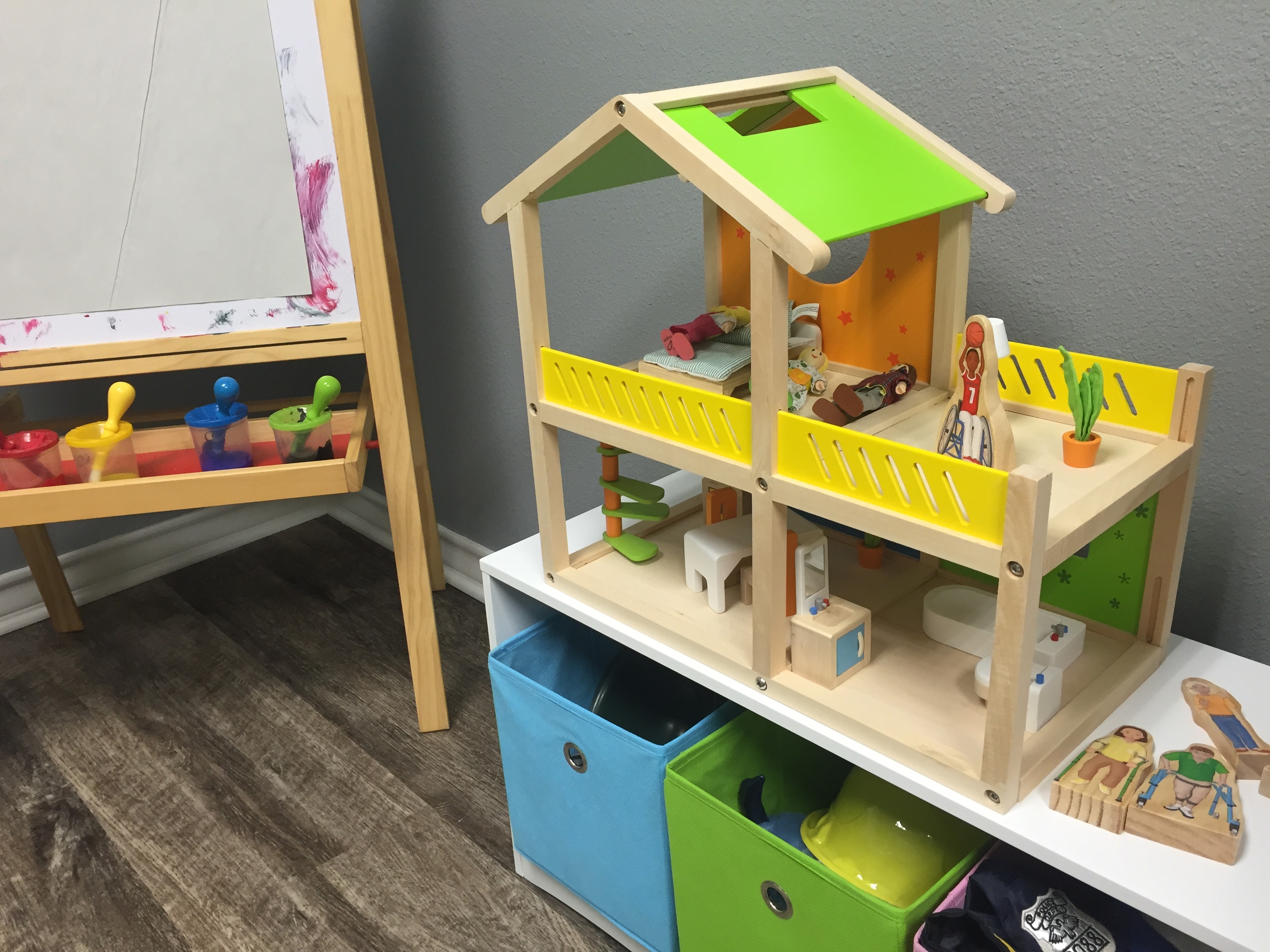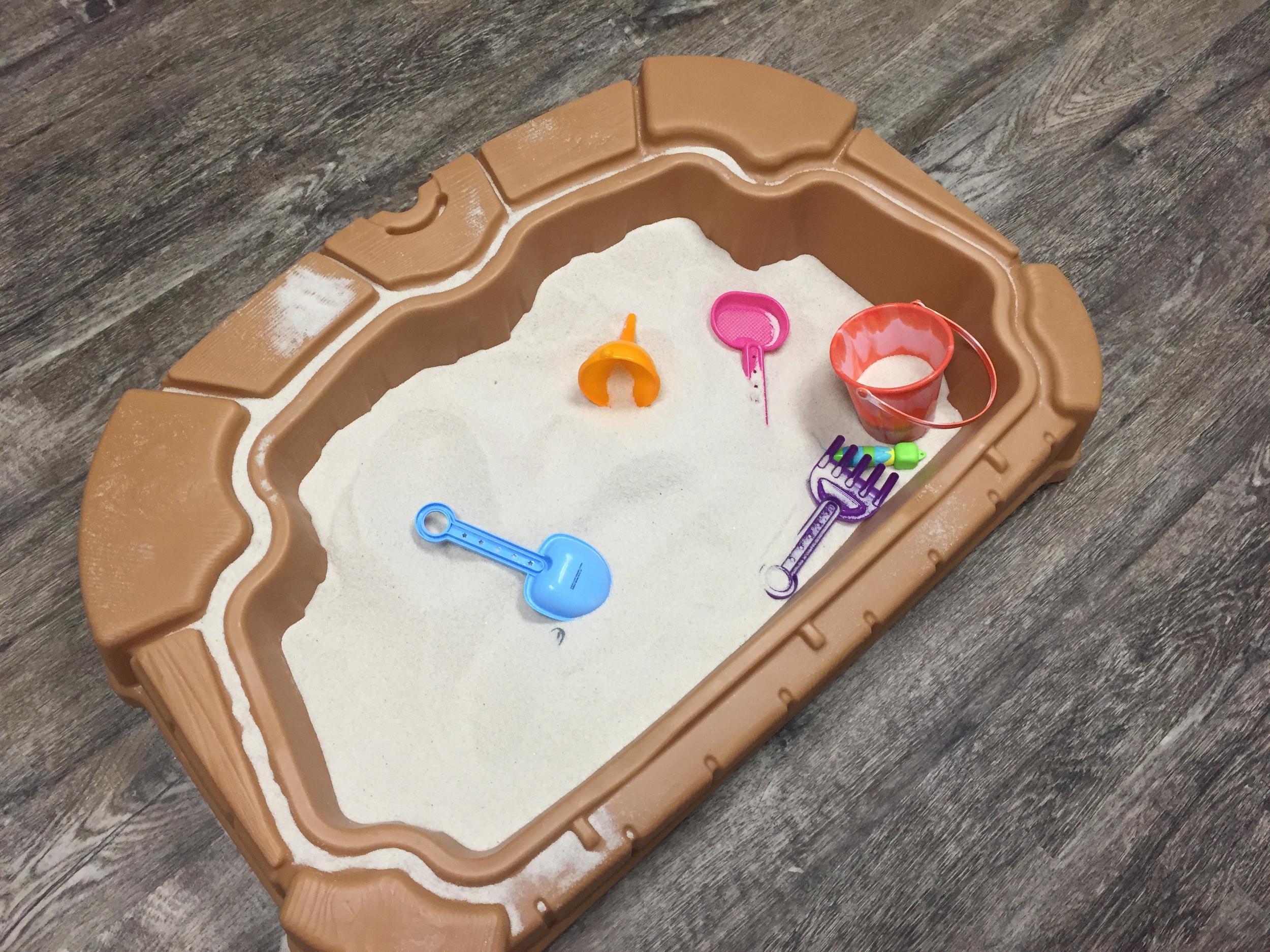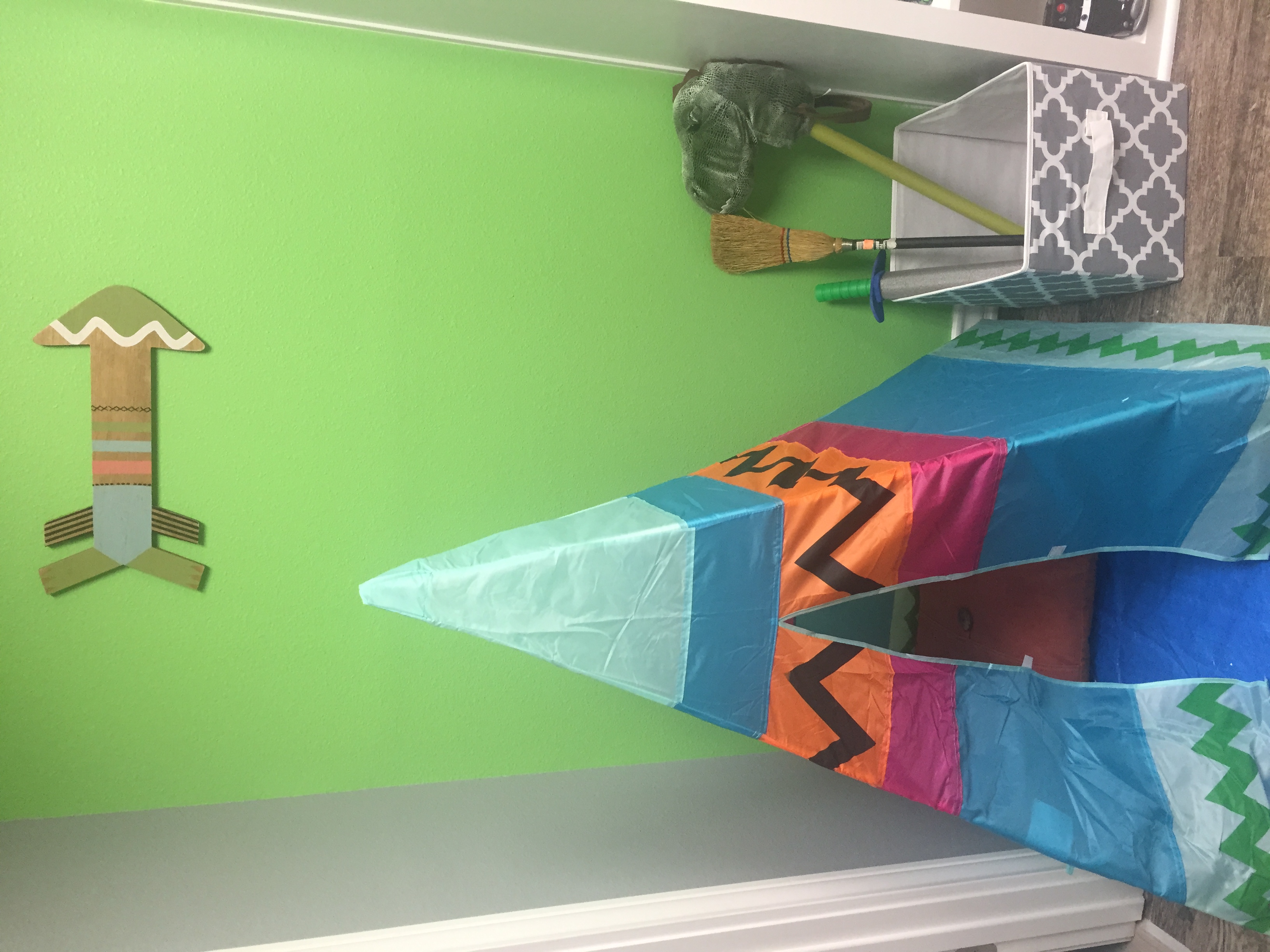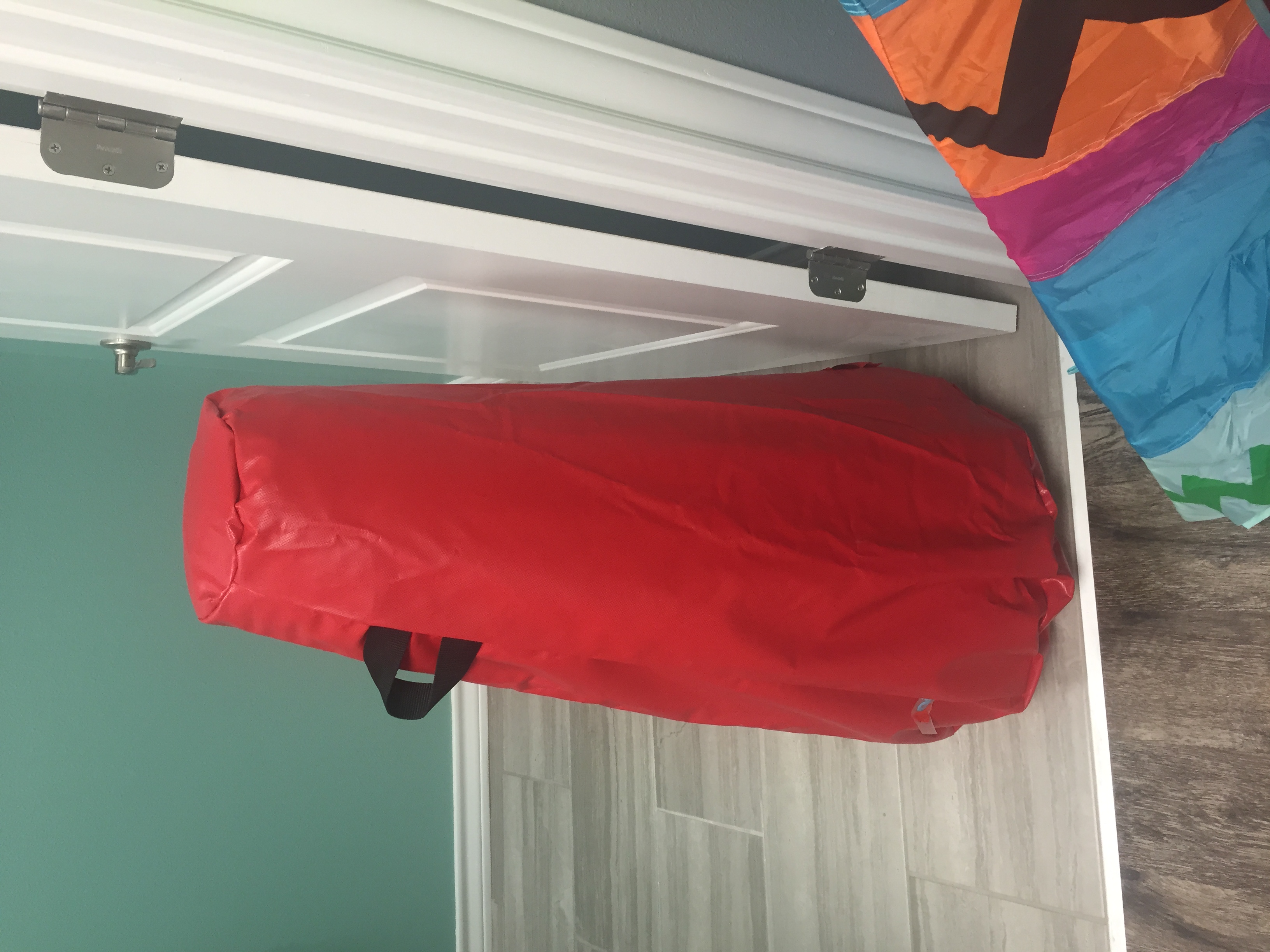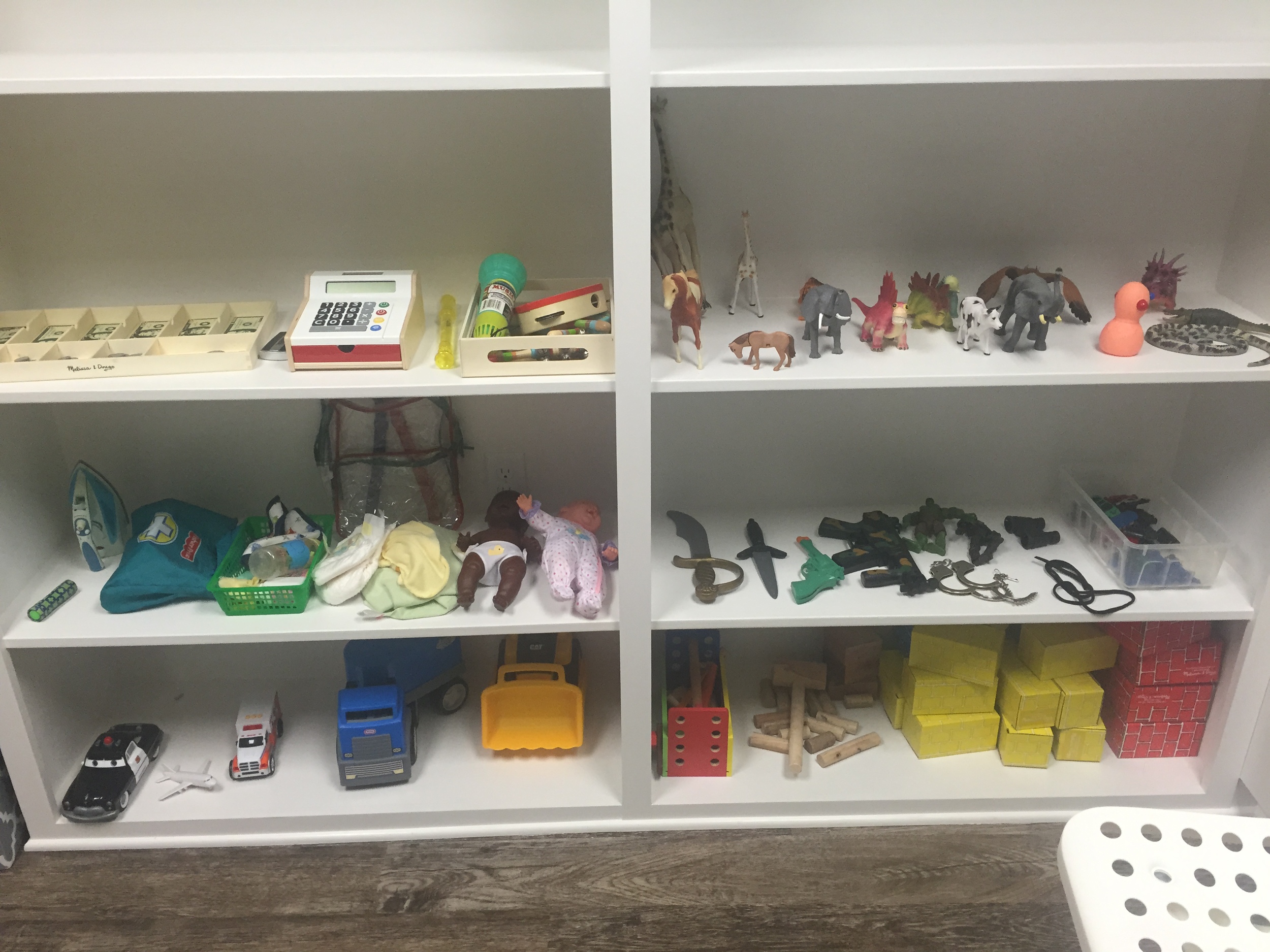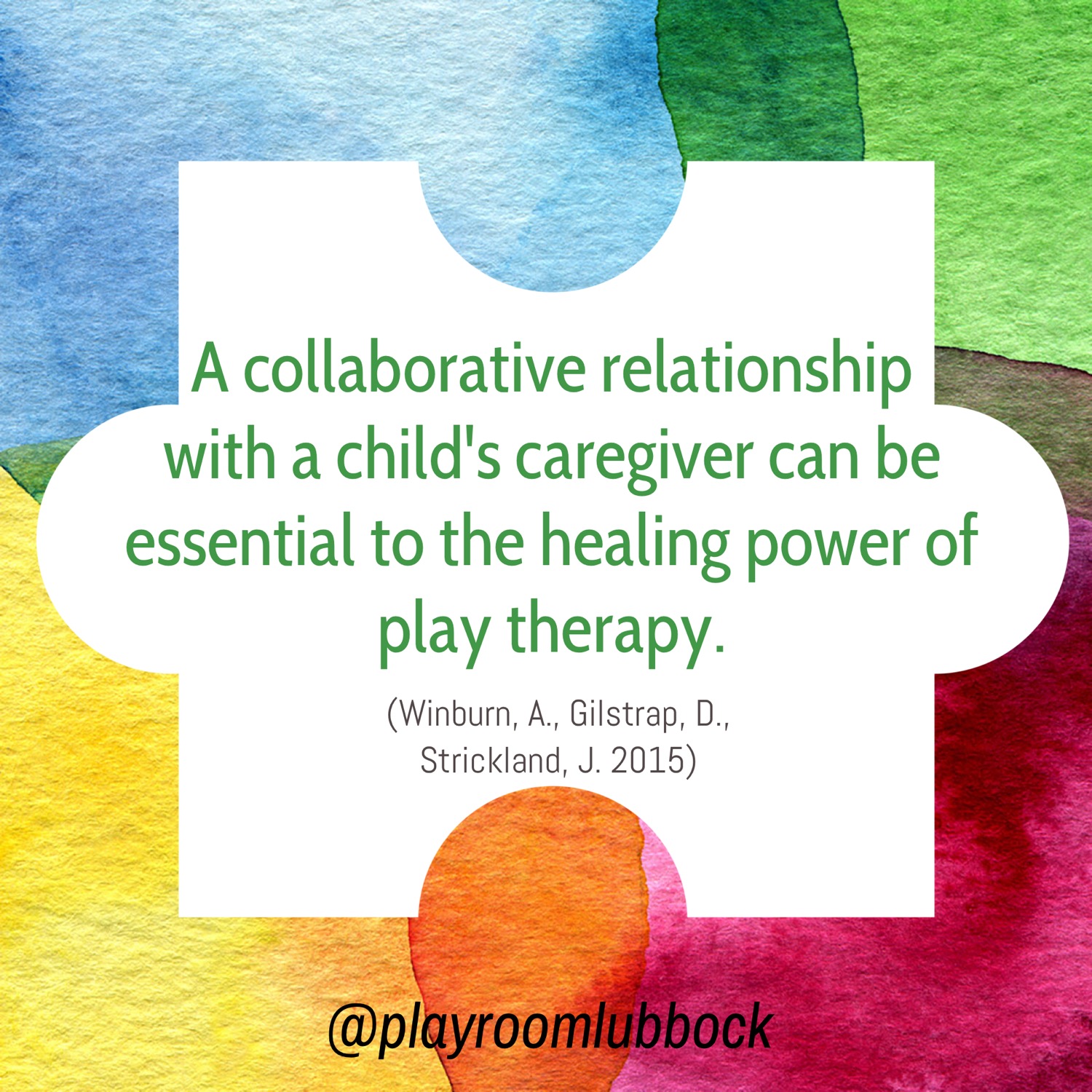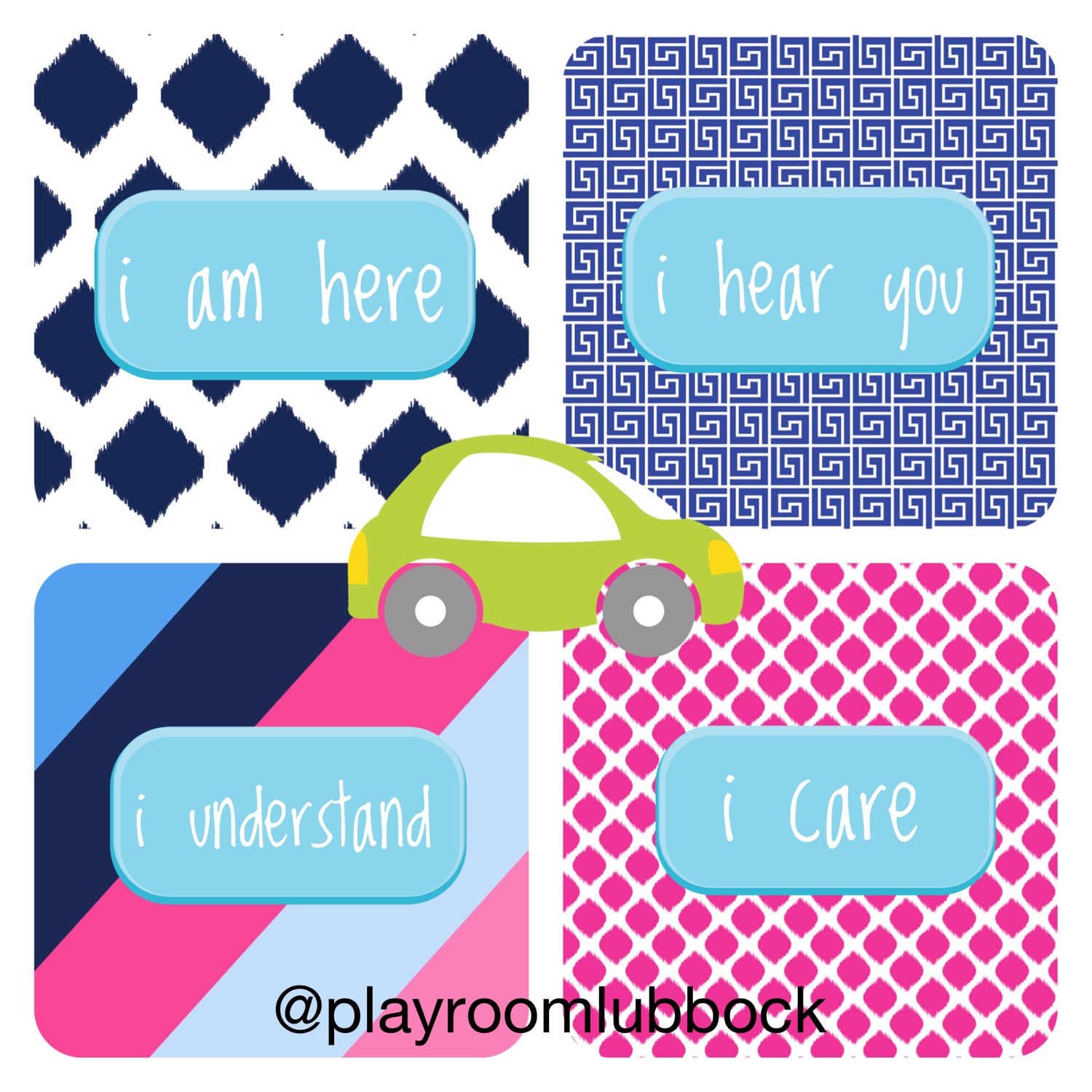Deciding to seek help for something you or your child are going through can be really hard. It may be your idea to seek treatment and go to therapy or it might not. The idea may be well received and provide relief or it may produce reluctance and uncertainty. Either way we want to provide some tips and insight in your search for a therapist and for your treatment journey.
Read moreWhen In Doubt, Connect
A few words on what to do when you don't know what to do. The following blog post is suitable for anyone who has a relationship in any capacity with someone else. I hope that keeps it broad enough. In my practice I facilitate strengthening the parent/caregiver/child relationship. However, the following same principles apply to romantic relationships, friendships, teacher/student interactions, workplace relationships, etc...
It's not often that I quote myself, but when I do, it's because I struck a chord I needed to hear myself. In parenting or in other relationships we may find ourselves at a loss, confused, desperate, hopeless, discouraged, or hurt. It's in those times that we should respond with love and connection.
How do goals of behavior affect our responses?
I frequently talk with parents about a child's goals for misbehavior--that behavior is goal directed and children are trying to fulfill a need. Adults do the same thing except our misbehavior looks differently, but is rooted in the same needs.
In our relationships and interactions with others, we automatically assign a story to our beliefs about ourselves, about others, and about our situations. These beliefs will trigger emotions which trigger a reaction. This reaction is trying to fulfill a need.
When we are are feeling discouraged, challenged, hurt, confused, or hopeless in our relationships, it would serve us well to reflect on what might be the other person's goal and what might be our goal.
Power/Control, Inadequacy/Fear of Failure, Revenge, Attention
1. Goal: power and control. The belief behind power/control is: I belong or I am valued when I am in control or proving no one can boss me.
2. Goal: avoid inadequacy. The belief behind inadequacy/fear of Failure is: I don't believe I can belong so I'll convince others not to expect anything from me. I am helpless and unable. It's no use trying because I won't do it right. OR I will do everything I can to avoid being perceived as inadequate.
3. Goal: hurt, get even. The belief behind revenge is: I'll hurt others as I feel hurt. I can't be liked or loved.
4. Goal: attention. The belief behind attention is: I am valued only when I am being noticed. I'm only important when I'm keeping you busy with me.
What's the best response?
To change a negative attitude you're holding about an individual, you'll need to uncover the underlying belief or goal that's creating your unhappy feelings. Begin by asking whether you believe people, in general, are doing the best they can. Researcher Brene Brown has discovered that believing that you and others are doing the best you can requires compassion. "You may not be absolutely sure about the intention behind someone's behavior, including your own. But being compassionate is about cultivating the attitude that normally people do their best with the tools they have. Compassion allows us to believe that we can all learn from our mistakes, enabling us to grow and change." (ThePropelPrinciples.com)
What's the most generous possible interpretation of the intentions words, and actions of others? (Brene Brown)
Equally, what's the most generous possible interpretation of our own actions?
1. Identify goals of behavior with the most generous possible interpretation.
2. Evaluate whether your reaction is responding to their need/goal AND whether your reaction is self serving your goals of behavior. Are you reacting out of your own sense of inadequacy, need for control, from feeling hurt, or to be recognized?
When in doubt, do something that connects or communicates love.
When we feel at a loss for an appropriate response or don't have the time or emotional energy to calculate goals or beliefs, respond in a way that connects, preserves a relationship, or communicates love. (Remember, another person's response to your extension of connection does not determine your adequacy or value).
Offering connection or love does not imply permissiveness nor does it allow someone to take advantage of or walk all over you. Brene Brown recommends Living BIG: Boundaries, Integrity, Generosity. "Setting boundaries means getting clear on what behaviors are okay and what's not okay. Integrity is the key to this commitment because it's how we set those boundaries and ultimately hold ourselves and others accountable for respecting them." (Brene Brown, Rising Strong).
How Do We Start the Play Therapy/Counseling Process? What parents can expect
When parents begin to notice a child's functioning or well being is being affected by a life circumstance or behavior, speaking to a mental health professional is an appropriate first step. At the Playroom Lubbock we do not require a pediatrician referral. You can simply call our office to ask questions, tell us a little bit about your concerns, and book your first appointment. In fact, when you call inquiring about play therapy/teen activity therapy you will speak directly to Kelly Martin, LPC. Once you book your appointment, Kelly will send via email the necessary consent forms and intake paperwork through a secure client portal. Unless you have custody papers or prior assessment evaluation reports, you do not need to bring any other paperwork to the first session.
The first session
The first session is a parent only session with our children's counselor and play therapist, Kelly Martin. There are several topics that will be discussed during this 45 minute session:
- Kelly's practice policies and privacy policies
- Stages of play therapy
- Background history of the child
- Goals the parents have for both the child and for themselves
- A treatment plan for therapy
Warm and inviting office for parent sessions.
The fourth session
Prior to the 4th session, Kelly will send a parent report form for the parent to complete. This gives them the opportunity to record changes, rate progress, and jot down questions or concerns. Every 4th session Kelly and the parents/guardians come back together for a session to discuss progress, changes, review goals, and to provide support to keep the therapy process moving forward. We continue this cycle of 3 child therapy sessions followed by a parent session.
Value of the parent
Parents and guardians are also an agent of change in the therapy process. Parents know their children best and their insight, perspective, and observations are valued and helpful to the counselor in her work with their child.
Raising Confident, Capable Kids in a Performance Filled Culture
“Children who come to believe that our love, praise, or affection is contingent on their pleasing us and doing what we want them to do become the most vulnerable of all people.”
I have been silently taking inventory of our culture's and many families' perceptions of performance and raising confident/capable kids. What stands out the most is the unintentional reinforced value that performance has on self-worth. What also stands out are misconceptions of grace and confidence which affect children's perceptions of life and faith.
Before we dive in, you must understand as parents, that it is never too late to make improvements. We are easily caught up in performance based parenting and feeling the shame and guilt of not parenting the way we "should" or the way others do. We equate our parenting performance with our self-worth as a parent. We begin to parent out of fear of inadequacy instead out of grace and confidence.
“We grow and change much faster when we shed discouraging thoughts about what we have failed to accomplish.”
To get all of us started in making some improvements, I will be referencing and pulling out pieces from these resources: Raising Self-Reliant Children in a Self-Indulgent World (Glenn and Nelsen) and What's So Amazing About Grace? (Philip Yancey).
In today's culture we are bombarded with opportunities and pressures for our kids to perform or to prove their abilities. How do we carve out self-confidence, self-validation, self-discipline, good judgement, and a sense of responsibility in our children? These capabilities can be nourished in young people through 1. networking 2. finding meaningful roles 3. exploring 4. celebrating 5. setting limits, 6. developing self-control and 7. modeling grace.
First let's understand "perception." When we think through our experiences, we form conclusions about ourselves and our lives (perception). Children make decisions about themselves based upon their experiences. They think about what they need to do to survive or thrive. When a child's perceptions are threatened or when their perceptions are not consistent with the environment, their brain reacts, which sends a signal to their body to react. You've heard of fight, flight, or freeze. Read more about brain science and behavior here.
Perceptions are unique. Perceptions are keys to attitudes, motivation, and behavior. Perceptions must first be supported and challenged in order to change.
Glenn and Nelsen in Raising Self-Reliant Children in a Self-Indulgent World suggest ways of helping children process their experiences and examine their perceptions.
1. Identify: What are the important parts of the experience? What happened? What was the outcome? What were your feelings? What was most important?
2. Analyze: Why was that important to you? What were you trying to do?
3. Generalize: How can you use this information next time? What do you need to repeat to achieve the same outcome?
Nourishing Your Child's Capabilities
Networking
“The simplest of all networks is friendship.”
People are tribal creatures designed for relationships. We excel when we collaborate, teach, affirm, and encourage each other. Who is in your tribe with whom you can dialogue about the world, about life, and about kids?
Finding Meaningful Roles
“Today we need to deal with our young people actively in ways that cause them to believe they are significant contributors rather than just objects or passive recipients of our activities.”
As children find meaningful roles in their family and in their social groups, they develop a sense of importance and personal significance. Focus, direction, a sense of ownership, all help to foster this perception of personal significance. When we listen to our children and take them seriously, we can restore collaboration with them. What are some ways you can offer meaningful roles to your children? How can you incorporate family meetings into your routine? What ritual, tradition, or activity can you devote weekly time?
“The need to be needed is often more powerful than the need to survive.”
Exploring
“Experience, especially one that’s reflected on, is a far more effective teacher than parents could ever be.”
Too often parents or caregivers step in prematurely instead of allowing a child to do for himself or to experience for himself. When parents are too quick to offer an explanation or expertise, the child is left feeling vulnerable or intimidated. They may form the perception of: I am not capable unless they are here. What would happen if they were not there? Rescuer parents rescue children from inadequacy and then enable them to remain vulnerable.
By helping our children explore their experiences, they will develop confidence in their ability to learn and problem solve.
Celebrating
When we recognize effort and progress, we get more results. Sometimes we unintentionally set up a trap for our children by steering them to be independent and then objecting to their way of doing things. Instead, encourage children with specific feedback and acknowledgement of effort.
When we praise the performance or praise the results, we lose sight of the individual and her effort and contribution. Examine how you celebrate your own successes or how you evaluate your mistakes. Do you communicate that self worth and self control are independent of external circumstances?
Setting Limits
“Setting limits is an exercise in using our wisdom and experience to anticipate possible problems and solve them in advance.”
Too often we wait until after something has gone wrong to decide what we'll do about it. We often react with anger and say meaningless things. Determining limits together with a child before a situation occurs will help your child's sense of control remain intact. Using firmness and respect to communicate and follow through with a limit provides opportunity for your child to honor the limit and exercise self-control.
Developing Self-Control
Our children's capability to recognize and acknowledge personal feelings directly affects their ability to select an appropriate behavioral response to a feeling.
“Once children become comfortable with the notion that their feelings are, as are the feelings of others, a legitimate, worthy part of their lives, they are ready to take the next step-to self-control. ”
Developmentally around eight years old, most children are capable of controlling impulses that bring immediate gratification and instead choosing a behavior that achieves a goal.
Philip Yancey in What's So Amazing About Grace chooses the word gratitude for motivation for "being good." We want our children to strive to do well and to have self-control--not to make their parents or God love them (we already do), but because of gratitude and a sense of love within a relationship.
Modeling Grace
“By instinct I feel I must do something in order to be accepted. Grace means there is nothing we can do to make God love us more. And grace means there is nothing we can do to make God love us less.”
Take the initiative to model grace by laying down retribution or fairness. Reinforce your love for your children regardless of performance or behavior. Speak truth and life into your children. Speak to who they are becoming. Forgive. Lay down all of your needs for gratitude and compliments.
We are modeling grace when we allow our children to operate from within themselves, to practice self-control, to explore experiences and opportunities, and to practice their abilities. Regardless of performance or failures, we can gracefully communicate to our children through our attitudes, words, modeling, and forgiveness that they are worthy of unconditional love. This sets the stage for them to explore faith, accept spiritual grace, and to realize their greater worth.
Next Steps
You've read through all of this information, now ask your self "What is the most important thing I've come to realize? What behavior change do I want to make? Why is this realization important right now? How can it make a difference in my life or my child's life? Where do I want to first apply it?"
Complete the following statement: As a result of this awareness, the first thing I will do at the first opportunity is....
Freaking Out, Brain Science, and Resetting Your Body
Racing heart. Sweat. Labored breathing, Uncontrollable crying. Chest tightening. You feel like you're going to DIE. Your body is reacting to perceived danger in your brain. Your unconscious mind has picked up a signal that you are unsafe and your body needs to activate for protection. When your brain senses danger, a messenger relays that information to your amygdala from your brain stem before your cerebral cortex can process it and make sense of it logically. The message is Fight. Flight. or Freeze.
What are "threats" or "perceived dangers" to the brain?
1. Threats to basic human needs both physiological and safety needs. Not only are traumatic experiences threatening, but physiological and love needs can also trigger a response. H.A.L.T stands for Hungry, Angry, Lonely, Tired. Are you feeling any of these?
2. "Shoulds." The "shoulds" are expectations you tell yourself. I should be more...I should have done this...I shouldn't be like that...I should...I should...I should. Go ahead--start writing a list of your "shoulds" as you realize them. We all have the "shoulds."
3. The Unknown. The unknown can be frightening. The unknown of the future. Of the unexpected. Of how your body will respond. Of outcomes. Unpredictability. Really, the unknown can go on for infinity.
4. Contradictory Messages in the Environment: Mixed messages in an environment are threats to the brain. Double standards. Unpredictability. For example: A parent who either encourages or "forces" a child to do an activity, and then criticizes his effort. Or a partner who is a completely different person under the influence of alcohol.
5. Implicit Memories. These are memories that rise to the "surface" of the brain, although are not recognized as a memory. It is when something happening now stirs up a memory from the past when you felt similarly--even though the current situation may be completely different. There is no time stamp either. For example, a scent associated with a past event may bring about an emotional response, yet the individual is unaware that scent was associated with the memory.
Dysregulation vs Defiance
This physical response to a perceived threat is called dysregulation, and it happens to both children and adults. The difference for a child though, is typically, he/she does not have the tools and skills to express this intense whirlwind. He/she often shuts down or acts out in order to release or suppress that energy. What may look like defiance is actually a physiological response to perceived danger. Defiance is intentional and motivated by a desired outcome. Dysregulation is governed by the nervous system. Try telling a dysregulated nervous system that "there is nothing to be afraid of" or to simply "calm down." Or "he just needs a spanking." It's like sending an email through the mailbox in your front yard. You're sending a message through the wrong channels in the brain.
Symptoms of Dysregulation
We are all very much aware when a dysregulated individual is in a hyper-aroused state: Aggression, disorganized, alert, excessive motor activity, uncontrollable, irritable, anxious.
But, a hypo-arousal state looks and feels much differently. It's easier to misperceive. Tired, automatic obedience, appears life-less, non-expressive, numb, lack of motivation, isolated, helplessness.
Respond More Effectively
Mindfulness is key. Mindful awareness practices activate and harness the power of the prefrontal cortex in order to respond more effectively. As you repeatedly practice something, that state becomes a trait. You rewire your neurons. How cool is that?! Daniel Siegel discusses this here.
Mindfulness is simply recognizing what's going on inside (our internal experience) in order to shift our internal experience. When we are more aware of what is happening on the inside, then we have more freedom to make a different choice in our response. This self-awareness allows people to stay connected to themselves in overwhelming moments. Self awareness allows the brain to think rationally, thus giving more choice and control over a response. Modeling is the best way to teach mindfulness. Check in with yourself throughout the day, particularly with your body. Notice what is happening to your body in regards to temperature, sensations, and movement. What parts are tight or clenched? What parts are relaxed? Notice and breathe. We want our mind to be an active participant--when we bring our attention to our body, our brain is less likely to "jump to conclusions" about what is happening in the situation or in the environment. The more we model and teach our children to be mindful of the body, overtime, patterns that we have been stuck in, will begin to soften and release.
Reset your body
Grounding exercises are designed to bring your awareness into the present moment which reminds our bodies that we are actually safe from harm. Adrenaline and cortisol then can be reduced.
“When we change our perceptions, we change the symptoms in our nervous system.”
Lisa Dion compiled a list of activities to help return our bodies to a more regulated state.
- Run, jump, spin, dance, bounce on yoga ball, crash into something soft, roll on the floor
- Sit in a chair and push up by straightening arms
- Massages, deep pressure on your arms and legs
- Eat something crunchy
- Drink through a straw
- Take a bath/shower
- Wrap up in a blanket
- March or sing during transitions
- Play music
- Carry something heavy
- Do a wall push up, or press hands together firmly
- Run up/down steps
- Hang upside down
- Play sports
- Doodle
- Hold a fidget (koosh ball, rubber band, silly putty)
- Dim the lights/Turn on the lights
- Swing
- Yoga
- Breathe
Seek Professional Help
A healthy and effective therapeutic relationship with a counselor will provide an opportunity for you to examine and understand your perceived threats in a safe, empathic relationship and environment. For children, therapy involving play, sand, and activities will increase self-awareness, acceptance, regulation, and self-control. A therapeutic relationship can connect at both the brain and heart levels that promotes new growth and neural pathways in the brain as well as heal any hurts in the heart.
Preteens Benefit from The Playroom Lubbock Through Activity Play Therapy
Often times people wonder how play therapy is used with preadolescents. No matter the age, there is value in play and creative expression for treating emotional or behavioral challenges. Conventional play therapy may seem juvenile to preadolescents so a setting and activities consistent with the developmental needs of preteens is essential. A a licensed counselor for children, I use expressive arts and other age-appropriate play activities to help older kids/teens work through thoughts and feelings they are either unable or resistant to express verbally. The foundation of play therapy remains the same: play is the language and toys (or objects used in their activity) are the words.
“Appropriately structured creative art activities provide preteens with opportunities to change perceptions about self, others, and the world as they try out new roles and solutions...Furthermore, [they] facilitate a process of self-development, providing the preadolescent with the inner resources to cope with future difficulties.”
I purposefully select games and activities (as outlined in Bratton and Ferebee's article) that promote creative expression, encourage the release of feelings, facilitate the acting out of real-life concerns, and encourage effective problem-solving and coping strategies. The child has the freedom to creatively interpret the assignment.
“There was a child went forth every day,
And the first object he look’d upon,
that object he became,
And that object became part of him
for the day or a certain part of the day,
Or for many years or stretching cycles of years.”
Please take a picture tour of my activity room for older kids/teens. I am continually adding games and objects that aid the therapeutic process. You will notice the inviting and stimulating room for kids to explore, create, and expend energy. Equipment includes an art desk, easel, puppet theater/puppets, sandplay unit and figures, comfortable chairs, dress-up clothes, ball games, art materials, toys for symbolic acting out (dolls, punching bag, knives, swords, etc..), building blocks, toaster oven, and do-it-yourself project kits.
Source: "The Use of Structured Expressive Art Activities in Group Activity Therapy with Preadolescents" by Sue Carlton Bratton and Kelly Webb Ferebee in The Handbook of Group Play Therapy: How to Do it; How it Works; Whom it's Best For by Daniel S. Sweeney and Linda E. Homeyer.
Parents in the Play Room
Often times our children's counselor and play therapist, Kelly Martin, will use parents in the playroom with their child. The purpose of this is to improve connectivity, to enhance the parent child relationship, to increase trust and security, and to increase a level of mutual enjoyment of each other. Through this unique play time with a parent, the child will feel accepted and understood. Through play, the child will have the opportunity to release tension, feelings, and burdens. How a child feels about himself will make a significant difference in behavior.
The main task for the parent during the play session is to see and experience the child's play through the child's eyes. The parent communicates this understanding through an attitude of being present and by verbally describing the play and reflecting the child's feelings.
We want children to experience these attitudes from the parent:
I am here. I see you. I understand. I care.
Listed below are 4 basic skills parents can utilize in a play therapy session:
1. Tracking play: Watch and track your child's activity, expressions, and intentions. Describe out loud what you see so that your child perceives your undivided attention, your child learns words for their actions and feelings, and you learn about your child's play. It may sound something like this: "Oh I see you're filling that up with sand. You laughed when that one spilled out. You are going back to that toy. It seems like you are comparing the two." Notice how the toys were not labeled by the name we know. Allow your child to use and name toys as they perceive them to be.
2. Following Their Lead: Allow your child to decide what and how to play. Do not ask leading questions. Allow your child to be creative. This gives your child a feeling of having control and fosters creativity.
3. Reflecting Feeling: Notice how your child is feeling and verbally tell them what you notice. This helps your child learn words for feelings, it increases their self-awareness, and it shows them you are paying attention. It may sound something like: "You were surprised to find that in there." "You are feeling frustrated getting that open." "You seem to really be having fun."
4. Allowing Mastery of Skills: Don't do for a child what he can do for himself. It's so easy to jump in and assist with a task or to initiate an activity. Wait for your child to ask you to help with a difficult task, but be careful not to completely do the task for them. This sends a message that you are confident in your child's abilities and are supportive of their learning new skills. It helps build self-esteem.
Using parents in the playroom is an important piece to a child's progress. As the parent observes the counselor and learns these special play techniques, the parent can begin using them at home for special play times.
Car, Mealtime, Bedtime, and Device Hassles over the Holidays
During the holidays our schedules and routines change, road trips happen, boredom may settle in, and parents may feel like they are dealing with more behavior hassles rather than focusing on whatever their reason is for the season. Here are some quick tips to implement when there are hassles in the car, at mealtime, at bedtime, and over electronic devices. (Tips compiled from Positive Discipline A-Z by Jane Nelsen, Lynn Lott, and H. Stephen Glen).
Car Hassles
1. If you are having car hassles with the kids, it may be time for some training. Leave plenty of time to get to your destination. When kids start yelling or fighting, simply pull over and wait without saying a word. In this case actions speak louder than words. You've clearly heard loud words coming from the backseat. Mix it up and use your actions rather than trumping the kids' noise level.
2. If the trip is long, make frequent stops so the kids can get out and stretch.
3. Before departing on a trip ask the kids for their ideas that will help make the trip more comfortable and fun for them.
4. Utilize a calm down box in the car when frustrations arise. Items to include in a calm down box could be: headphones, silly putty, stretchy toy, magna doodle, or a pinwheel.
Mealtime Hassles
1. Trust your kids to eat when they are hungry and stop when they are not. Inadvertently interfering in this natural process could plant the seeds for eating disorders.
2. Sit down as a family and eat a meal together--without TV or devices. Engage your kids' help with setting the table or making decorations. Plan with them what they can do to contribute.
3. If kids know it's ok to choose what they will or won't eat, they are less apt to complain.
4. If kids complain about the cooking, simply say it's okay not to eat it, but it hurts feelings when they say they don't like it.
5. Schedule your meal time and communicate what time to your kids. Emphasize sharing stories, visiting, and sharing good feelings.
6. Practice good table manners at a time other than mealtime by making it fun, using humor, and exaggerating.
7. If you see mealtime as a time to make kids eat and to lecture about manners, the kids will probably pay you back with bad manners.
Bedtime Hassles
1. Serious bedtime problems are most often as result of parents engaging in power struggles.
2. It's important for kids to have input, but not to run the family.
3. One reason children seek more attention at bedtime is that they haven't received a good dose of it during the day. Be available.
4. Define an allotted time for the bedtime routine and stick to it.
5. Once it is officially bedtime, it's time for you to get out of the room. If you child gets up, kindly and firmly without talking take your child by the hand to his room. Actions speak louder than words.
6. If you child has developed a habit of manipulation it may take 3-5 nights to retrain bedtime routines.
7. If you have engaged in power struggles, admit your mistakes with your child and learn together how to solve the problem and try the routine a different way.
8. If needed, create a bedtime routine chart with your child of what needs to be done.
9. Use humor or make it a game such as Beat the Clock.
10. Children can learn self reliance instead of manipulation skills or dependence on someone else to help them get to sleep. They can learn to respect a parents' need for time alone.
Device Hassles
1. Involve your children in creating healthy guidelines for the use of electronic devices. Eliminate the "battle" by deciding together, and being kind and firm.
2. Give young children limited choices. For example 1 or 2 shows? Play on iPad for 30 minutes or watch a show for 30 minutes? Play before or after dinner?
3. Notice your own behavior. If you use your device excessively, it will be difficult to convince your kids to limit their time.
4. Help the kids make a list of activities they could do when they feel bored.
5. Talk with your kids about the addictive qualities of TV or devices so they know why you are concerned.
6. Set up a rotation for sharing devices that they can all live with.
Hopefully some of these tips and tricks will ease hassles during the holidays so that you can continue healthy and productive routines. Or perhaps they will kick start your attempt at more healthy routines. Bottom line: children can learn that they don't always get what they want, that it is okay to feel upset about that, and that they will survive.
Create an Emotional Climate for Learning and Cooperation
This article gives educators a brief overview of the strategies adapted from the book, How to Talk so Kids will Listen and How to Listen so Kids will Talk by Faber and Mazlish and listed in their article "How to Talk So Students Listen and Listen so Students Talk." Hopefully these strategies will encourage cooperation and foster a healthy emotional climate for learning. Try some of them on and see which ones fit!
1. Acknowledge Children's Feelings.
Kids are more likely to hear what we have to say after we first acknowledge their feelings instead of ignoring or denying them.
Instead of saying, "That's nonsense...You just need to study." Try responding and respecting his/her feeling which will lead to a discussion of the problem and a possible resolution. "Something about that word problem is frustrating you." "Oh, you sound angry at Michael. He did something that upset you."
2. Describe the Problem
Using a nonjudgmental tone, describe the problem instead of accusing/commanding.
Instead of "How many times do I have to remind you to raise your hand?" Try: "I hear an answer, but I don't see a hand." Instead of "You forgot to answer the last question. Do it now." Try: You've almost finished your assignment. I see some more left to go."
3. Give Information (without insult)
Make statements brief and impersonal instead of scolding, accusing, or threatening. Try: "Rulers are not for poking people. Rulers are for measuring." OR "When you do that, it could break."
4. Offer a choice
Many times you can offer a choice to the manner of their learning to give students more control over their learning process. For example: "You can choose to work on your vocabulary now or at the end of this assignment."
5. Say it in a Word
Instead of lengthy reminders, say it in a word. Instead of "How many times do I have to tell you to not put your foot in the aisle? Do you want someone to trip and get hurt?" Try: "Sara, your foot."
6. Catch a child doing something right and describe it
Give your students a shot of encouragement by noticing their effort and describing it. For example, if a student asks "Was I good today?" Instead of responding with "Very good!" try responding with "You helped clean up your desk after the science project and you had some interesting thoughts during our class discussion."
7. Describe what you feel
Afford yourself the relief of being genuine. You can model a way to be angry without being hurtful. Instead of attacking: "What is wrong with this class? Why does it take forever to....how do you expect to learn if...." Try: "I feel impatient when we don't get to work promptly. I would like to see all notebooks opened and everyone ready to begin when the bell rings."
8. Put it in Writing
Pass a note or send a note home to communicate a concern, reminder, or a care.
9. Solve the Problem Together
Conduct a class meeting. Gather information about how the students are feeling about a particular issue and possible solutions. Come up with some ground rules they could all agree upon.
Hopefully some of these quick strategies will increase respect and cooperation in the classroom. Thank you educators for being attuned and committed to all of your students' needs.
How does the counselor involve parents?
Parents are a vital piece to the child's process in play therapy. Here at the Playroom Lubbock, the parents and and counselor work alongside each other during the course of treatment. I usually tell parents when I first meet with them that when they sign their child up for play therapy, to buckle up and be a part of the ride. Vulnerability and personal growth for the parents is just as important to the child's therapy process as is the child's play "work" in the therapy playroom.
One of my favorite authors and speakers, Bob Goff, provided this anecdote. One of his favorite things about visiting England was the red double decker buses. When he first saw one he was so excited that he took a picture of it. (See picture). He was so close to it he lost sight of what it really was. Sometimes we need to back up our perspective so that we can see the whole picture. This is what the process is like for parents. I walk along side them in this process, backing up to see the whole picture, gaining insight, adjusting perspectives.
To help ease your concerns or perhaps fears of your role in the process, I will outline below how we involve parents.
1. Initial parent consultation session. This is the very first session with the counselor, but without the child. It lasts 45 minutes. We will discuss history, concerns, and what progress you would like to see made with your child. The counselor will also explain the therapy process as well as practice policies and your privacy.
2. Follow up parent consultation session. These typically occur after every 3 child sessions. During the parent consultation meetings you, the parent, will have the opportunity to discuss changes, progress, and concerns. The counselor will cover these 4 topics: Positives, Themes, Goals, and Strategies
Positives: Positive feedback regarding your child's behavior, emotions, or progress of therapy.
Themes: The counselor will loosely discuss play themes that have been observed over the last few sessions. Play themes are dominant or recurring themes within a child's play. The counselor takes in a child's feelings during play, intensity of play, the child's level of including the counselor, a child's level of connectedness, self control, problem solving capabilities, etc. As discussed in the initial Parent Consultation and in your Informed Consent forms, parents are reminded of the value of the therapeutic relationship and the trust that develops between the child and counselor. The counselor will only talk about a child's play to parents in vague terms, not giving many details or specifics. The counselors ask that parents trust that the counselor will communicate to them any "red flags" or concerns that she has regarding the child.
Goals: Based upon parent/school feedback, parents concerns, counselor’s insight, observations, and experiences in the playroom, and the play therapy process, the counselor and parent co create goals and areas that may need additional support in their child’s growth. Goals will be based upon the child’s individual developmental capacities and needs underlying their behaviors. Behaviors are symptoms and clues inside a child’s body, brain, and nervous system.
Strategies: We will discuss strategies for you to use at home to facilitate and support the goals. These strategies may be in the form of suggesting a book to read or may be more direct suggestions of ways of responding or interacting with your child.
3. At times the counselor may send a Parent Feedback form through our client portal. The Parent Report Form gives the parent the opportunity to rate the stress level, rate the overall progress level, state what changes have occurred in the child's life, and voice concerns or questions the parent still has.
4. Sometimes the intervention that is needed to support a child is family therapy or child parent relationship therapy which is a play based approach. These options can be discussed and explained and prepped for during the parent consultation sessions.
We value the parent child relationship and fully acknowledge that the parent is more of an expert regarding his child than the counselor. First and foremost the counselor wants to communicate to both the parent and the child: I am here. I hear you. I understand. I care. Relationship is the vehicle for change. By partnering with parents in considering the whole child and the whole picture, we are hopeful for progress, relief (for both parent and child), and healing that is supported by connection.
Who is our ideal client?
The opposite role of being a helping professional is the private practice business owner role. I am often asked to define, "Who is your ideal client?" Legitimately and appropriately asked, the answer depends on the service I am providing. My general response would be "any child or adolescent, ages 3-17, who is struggling emotionally or behaviorally or who may have difficulties in the future due to a life event or circumstance." These kids may benefit from play therapy counseling or a support/educational group where they have the opportunity to:
Develop responsibility, problem solving skills, confidence, and respect and acceptance of self and others
Learn to communicate, creatively think, express emotion.
Relieve stress, cultivate empathy, enhance social skills
If a child or teenager has difficulty or may develop a difficulty with any of the above AND it is beginning to cause stress within the family or negatively affect the child's functioning at home, at school, at work, or in the community, then it is worth calling The Playroom Lubbock for a phone consultation to see if our services are appropriate for your needs.
The more important question as a helping professional is, "What are the ideal conditions for change?" As a child-centered play therapist, I believe the child, through play therapy, comes to form an appropriate understanding of his world and of himself. I help the parents understand their child's world through collaboration with them. Of utmost importance is the quality of the relationship between the client and therapist. The vehicle of change within the therapeutic relationship relies on these 4 messages conveyed to the child: I am here. I hear you. I understand. I care.
The ideal question for parents is "Who is the ideal helping professional for my child?" Parents should create a checklist of concerns and questions to ask such as: "What's the therapist's background or training working with children? How often do you meet with parents? How long do children stay in therapy? What can this therapy do for my child?" Partnering with a therapist or counselor is ideal. Parents know their child best, and the more information parents can gather and communicate, the better. Therapy for your child is not only a financial investment (of research and evidence based practices), but more importantly, an emotional and quality of life investment for both the parents and child. Therapy requires a parent's commitment to maintain appointments, to partner with the therapist, and to be open to change and to where the child steers the direction of therapy.
As I mentioned before, our "ideal client" will be different depending on the service. We provide continuing education for professionals and training for parents. We will also speak to groups of kids, adults, educators, or community professionals. In the near future we will be expanding our therapy services to include speech, occupational, music, or art therapies which all address specific needs and all have their own "ideal clients."
A Different Kind of Playroom
Here at the Playroom Lubbock we have 2 Play Therapy rooms for using in child counseling or child play therapy. These playrooms, at first glance, may seem like a kid friendly room with toys, however, the play therapist's selection and placement of toys is deliberate and based upon sound rationale.
“Children are more likely to feel comfortable in places where a sense of openness exists that says to the child, ‘You are free to use what is here. Be yourself. Explore.’”
We have thoughtfully selected the toys of our playrooms so that children will feel a sense of openness and interest rather than caution or hesitancy. The toys and play materials facilitate a wide range of creative, exploratory, and emotional expressions without the expectation of children talking or verbalizing. Mechanical and electronic toys do not allow for children's expressions and therefore are not included in our playrooms.
We want toys to support these essentials of play therapy as cited in Play Therapy: The Art of the Relationship by Garry Landreth.
Establishing a positive relationship between child and counselor
Expressing a wide range of feelings
Exploring real-life experiences
Reality testing of limits and boundaries
Developing a positive self-image
Developing positive self-understanding
Developing self-control
The three main categories of toys in our playrooms include real life toys, aggressive-release toys, and toys for creative expression and emotional release. Below are pictures of our play therapy playroom for children ages 3-10. Soon we will give you a peak into our playroom for older kids and teenagers.
Inspiration, Healthy Risks, And Vending Machines
Inspiration is all around us--even tucked away in a creepy looking vending machine at a small ice cream parlor.
“I think about how the world is breathing over me, anticipating regular moments of inspiration if I only pause to inhale...”
As long as we choose to inhale, we receive the opportunity to be inspired, to learn something new, to feel refreshed, or to shift perspectives.
Perhaps my story of inspiration was caused less by a creepy vending machine and caused more by my 2 year old son's decision. So here's the story:
Upon entering an ice cream parlor to escape an outside sticky heat and to indulge in a sweet treat, my 2 sons noticed 2 separate vending machines sitting side by side. One typical machine contained clearly visible bouncy balls of assorted colors and swirls. The other machine contained a monkey sitting atop assorted color plastic eggs containing a small prize. Without much thought my older child asked for a quarter to buy a bouncy ball. Again without much thought, my younger child asked for a quarter to put into the monkey vending machine. Even with my interference by reminding him that we do not know what was in the egg and that he does know that he likes bouncy balls, he was adamant about purchasing that egg.
Did I feel inspired? Well not right away. The inspiration occurred to me a month later when I found this egg in the bottom of my purse. It had a "message" for me that I was ready to recognize.
My son pursued the unknown, took a healthy risk, and was able to regulate how he felt and responded to the outcome. Once I breathed in this realization, I asked myself a few questions.
How often do I settle for what's clearly visible rather than taking healthy risk?
What keeps me from stepping out of familiarity and into the unknown?
What does this say about how I view faith or hope?
How do I handle the unexpected? Or the outcome?
Am I listening to all the subtle whispers that lead me to find inspiration?
How do I encourage rather than inhibit my children's pursuits and dreams?
My hope for you reading this blog post is that you begin to listen to those whispers, inhale the inspiration surrounding us, and bravely step out in faith.
A Beginning to a Whining's End
If you've caught yourself with outstretched hands up to your head, clenched teeth, and saying "Stop the whining already!" this read might just be a beginning to a whining's end.
Why does my child whine?
1. Whining thrives on unmet needs. Usually that unmet need is attention. Sure, your child probably whines when he/she wants something that he can't have or he/she whines after you've said "no." We will get to that scenario in a minute. If your child is whining, he is getting a response from you. Oddly enough, even negative attention is getting some attention, and the negative attention is helping to fulfill a child's unmet need of attention.
2. Vocabulary. Your child may not have the vocabulary to tell you how he/she is feeling.
3. H.A.L.T. Is your child hungry, angry, lonely, or tired?
4. Your child has limited control over his life and limited choices.
Why does whining lead to backtalk?
1. Mirroring what is being modeled. Are you reacting or responding to the whining? How does your child perceive your emotions and tone of voice?
2. Is there an atmosphere of power struggles by being too controlling or too permissive?
3. Are you making disrespectful demands or using calm, but firm invitations to cooperate?
4. Disappointment or setting up a situation for frustration/failure.
What can I do?
1. Put down your electronic device. Make eye contact.
2. Depending on the scenario, use physical touch such as a hug, sitting side by side, or a "tickle spider."
3. Reflect with your words how your child is feeling. "You're feeling disappointed you can't go to the park today. You really were looking forward to that."
4. Give choices within your boundaries. "You really want a snack right now. We will have dinner in 20 minutes. You can choose _____or______for snack before bed."
5. Use your sense of humor and laugh. It's ok not to be serious all of the time. Gain some perspective, view behavior as age appropriate, and see the humor in situations with children. Sometimes we misperceive being silly for disrespect. A laugh or a quick joke could diffuse a situation that could have otherwise turned into an unintentional power struggle.
6. Set up a routine or schedule board. Welcome you child's input into creating the schedule. Your child will feel ownership and will feel heard if he is allowed to make some choices or help create the schedule board.
7. If there is a hidden message behind the whine, try to meet that need: Hungry? Angry? Lonely? Tired? Unloved? Reality check: If we as parents are also feeling hungry, angry, lonely, or tired, isn't it that much more difficult to deal with our kids' difficult behaviors?
8. Practice self care. Refresh. Relax. Play.
9. During a peaceful or happy time, brainstorm with your child how she can ask for something without whining. Practice. Role play. Point out the difference between a whiney voice and a respectful, age appropriate voice.
“Ignore the whining and find lots of ways to encourage your child.”
10. Apologize if you have spoken disrespectfully. Model respectful requests and avoid comebacks.
11. Share your feelings: "My feelings are hurt when you talk to me that way. I am going into the other room until you are ready to talk to me respectfully."
12. Instead of a command, "Pick up that toy before you leave." Try saying, "What about that toy?"
13. Ask your child to repeat to you what you just said. "What was my answer to that?"
Hopefully some of these tips/tricks you will find useful depending on the situation and the child. Thanks goes to one of my favorite books to help guide this discussion: Positive Discipline A-Z by Jane Nelsen, Lynn Lott, and H. Stephen Glenn. Sprinkled with some personal experiences, of course.
Kelly
Expressive Arts in Counseling
At the Playroom Lubbock we offer individual and group counseling to kids and teens. You've probably heard us talk about play therapy (using toys as a safe medium for expression) and sandtray (using toys/figures in the sand), but what is "expressive arts" that we talk about? Quite simply, expressive arts is an opportunity to use the arts to safely express oneself and through the process, learn by doing. It uses the arts as a basis for discovery and change. The arts can include art materials, dramatic play, acting, music, dancing, or other artful movements. The emphasis is on the process rather than the product. No previous art background is needed.
When will expressive arts be used at The Playroom Lubbock?
Kids in individual counseling have the opportunity to spontaneously engage in expressive arts because of the assortment of expressive arts materials and toys available to them in the therapy playrooms. The counselor may also incorporate expressive art activities into group counseling or kids groups.
How does the creative process produce change?
Carl Rogers explains that under certain conditions, a person (child) is free to be creative, to be himself, and be open to a new experience of self awareness and change.
“If offered in a safe, empathic, non-judgmental environment, it is a transformative process for constructive change.”
The counselor 1. accepts the child as having unconditional worth 2. listens with empathy and shows understanding of the child through nonverbals and reflective statements 3. provides a non judgmental climate by not making evaluative or critical statements regarding the child or what the child is doing.
The counselor trusts the process that the child (with the help of a safe therapeutic relationship) will take his/her experiences, perceptions, and potential where and when the child needs. *However, there are boundaries and limit setting which can be explained in an entirely other blog post.
A child's expressive art is an image or metaphor representing a child's perspectives, experiences, desires, fears, and goals. Once a child feels emotionally safe and psychologically free, he is able to blossom. It is through the process of creativity that a child gains awareness, resolve, and ideas to move forward. It is not through a counselor's interpretation or analysis of a child's creative product that brings change.
What is the ultimate goal for counseling?
You may have very specific goals for your child. For example, control his temper, obey the rules, not be so impulsive, not be anxious, play better with others, learn social skills, etc...Play therapy, expressive arts, and sandtray therapy will address all of those. However, the ultimate life goals for kids (and adults) is to 1. adjust, change, and seek new experiences 2. be yourself in the present moment 3. trust yourself to make the right choices and take responsibility for your choices and 4. treat others with positive regard, respect, and love.
Anger Serves a Purpose
What We Know about Anger:
1. Anger is a natural emotion that varies in intensity.
2. Physiological and biological changes occur with anger (heart rate, blood pressure, adrenaline, and noradrenaline increase)
3. Some kids are more easily angered than others. This can be a result of genetics, sociocultural factors (for example, not being allowed to display the emotion), or family background.
“People who are easily angered generally have what some psychologists call a low tolerance for frustration.”
4. Subtle forms of anger in children may include pouting, sulking, and whining.
5. Anger can be a response to danger, a form of self-expression, or a declaration of independence. It can also be a symptom of being hungry, tired, or lonely.
6. Emotions under the surface of anger could be: embarrassment, annoyance, shame, guilt, grief, nervousness, insecurity, disappointment, frustration, helplessness, jealousy, regret, hurt, pressure, rejection, fear, inadequacy, or loneliness.
Anger serves a purpose to communicate a child's unmet need. Through being aware, listening, teaching, modeling, and accepting the emotion, anger can be productive rather than destructive. Relieving rather than damaging. Insightful rather than unacceptable. Motivating rather than suppressing.
Strategies for Purposeful Anger for Children
1. Listen, Listen, Listen. Listening may include increasing your awareness prior to any outbursts of anger. What or who has changed for the child in the environment? What other feelings is the child showing? Any other physical symptoms? What is your child doing differently from his/her typical responses or routines? Listen, Listen, Listen also means the obvious for verbal kids: Listen to his/her story without any interruptions or suggestions.
2. Teach and Model: Teach your child to identify the physical responses of anger: feeling hot? heart racing? eyes tearing up? fists clenching? grinding teeth? Put a name to feelings: decide on a feeling name for those responses and put it to use: "I am feeling so ________." Or "You're feeling really ______." Model your own anger managing behaviors by expressing the feeling, verbalizing how you will calm down, and verbalizing your choices.
3. Calm Down: Use some calming strategies when your child feels the symptoms of anger. Ideas are: taking deep breath, blowing into a pinwheel, blowing bubbles, squeezing silly putty, drinking a glass of water, playing alone, shaking sensory bottles, throwing wet sponges outside, stomping on an empty egg carton, drawing, journaling, doodling, listening to music, taking a walk, screaming in a pillow, etc. Giving your child calm down choices helps to reduce frustration, especially frustration that is a result of feeling of powerlessness or helplessness. If your child is feeling out of control and at risk of hurting himself or another person, separate her from that person or from a room/objects that aren't safe. Stop the action and restore safety. We love these 26 phrases for calming down an angry child: Click Here
4. Give Choices: This really only is helpful when a child has calmed down and all physiological responses have decreased. Look for possible solutions that may include compromising or apologizing.
5. Set Limits: Remind your child of limits to aggression. For example, "Hands aren't for hitting. If you choose to hit, you choose to not play right now." "Our family rules about cussing at people are ______. You can choose to write out your thoughts or doodle in your notebook. If you choose to cuss at your sister you choose to ___________(insert consequence)." If your child continues to break the limit, follow through with the consequence.
6. Teach empathy and forgiveness: Children need your help with learning empathy. Without using guilt or shame, talk about what another person's perspective might be. What are some options of expressing herself about her own perspective? Regarding forgiveness, apologies can help kids move from guilty feelings to hopeful feelings that they can do better. Reassuring your child of your love communicates that their anger or angry behavior doesn't make him a bad kid or an unloved kid.
When Anger is Crying for Help
When anger persists and interferes with relationships with family or friends, remember that the purpose of anger is to communicate an unmet need. Are there threats to safety? Deep tensions in the family? A developmental delay in language or social skills? Some kind of loss? If you're concerned about your child's anger, discuss this with a mental health professional. You're welcome to start with us at The Playroom Lubbock.
More on Brain Science and Resetting Your Body
Check out our other article here about the neurobiology behind anger, anxiety, and dysregulation.
Let Children Color Their Perception of Therapy
You've made the first step and made an appointment with a child/adolescent counselor. You may have showed up a little apprehensively to the initial intake appointment with the counselor/therapist. After you realize the counselor wants to support your efforts as a parent (you are, after all, the primary influence over your child's life) and the counselor "hears you out," it occurs to you that you have to think of a way to tell your child he/she is going to therapy. In fact, let's just cut out the word "therapy." Add "fix your problems," "bad feelings," "disobeying" to the list of What Not to Say. "Ideally, it is best if the child is allowed to develop their own impressions of the therapist and what therapy is all about from actual experiences in the playroom" (Killough McGuire, D. and McGuire, D, 2001. Linking Parents to Play Therapy. NC: Taylor and Francis). We hope our name, The Playroom, provides a sense of comfort and familiarity for your child so that he feels safe and free to form his own impressions.
So How do You say It?
McGuire and McGuire in their book Linking Parents to Play Therapy suggest parents tell their child (depending on developmental level) something like this: "This is a time for you to play in a room full of toys and things you like to do with someone who really cares about you" (p. 16). As necessary, the therapist can also provide further information to the child. Another way to phrase this for an older child would be:
“It’s a safe place to find support and an unbiased adult to listen. ”
Communicate with Feeling Words
When your child comes out of a session reflect his/her emotion. "You're really excited coming out of there." "You seem to feel quiet." "You're feeling ready to go!" You can also respond with a feeling to any questions they may have: "You're curious that_____." "You're wondering if ______."
Communicating about their Art/Creations
At times your child may bring home something he/she created. It is important to view their creation from their therapy session as a page out of a journal. It can be very private and emotional. Be mindful that your child may choose not to talk about it. If your child is eager to show you (and quite honestly you may have no idea what you are looking at), you can say "Tell me more about that." You can focus on details of what he or she did: "You put those colors right there." "Looks like you spent a lot of time on that." "You drew this here and that over there." Or if a child asks you if you like it, you can respond with, "What's important is if you like it. What do you think about it?"
Communicate with Nonverbals
Dr. Kay Sudekum Trotter, PhD, LPC-S, suggests that when you stay in the waiting room instead of running errands during a session, you nonverbally communicate that "you're so important to me that I will be here the whole time supporting you." (Tartakovsky, M. (2015) Common Things Parents Say to Their Kids about Therapy that Aren't Helpful. Retrieved from PsychCentral.com)
Communicate Privately with the Therapist
It is important to be mindful of little listening ears. Talking about your child's progress or lack there of, or more specifically the problems you want to see addressed, in front of the child, may lead to feelings of inadequacy, embarrassment, and shame.
What NOT to Communicate:
The following list of common comments that parents make may isolate your child or negatively color their perception of therapy or the therapist.
“The therapist is going to help you with your problems. You need help”
”We can’t help you anymore because your problems are too big.”
”We have to go to therapy because your dad or mom left us.”
”You need to go to therapy because since the divorce you have been really emotional and difficult to deal with.”
”Your therapist is going to be so disappointed in you for doing___”
Speaking to therapist: “Maybe you can help _____with learning how to better control his emotions when he doesn’t get his way.”
In Conclusion
Parents are very well meaning in their communication with kids. Hopefully these suggestions provide another perspective about how your words can and should encourage your child and therapeutic play.
Collaboration with Parents in Play Therapy
At The Playroom Lubbock we provide optimal and collaborative therapy solutions. Collaboration begins and continues with parents/caregivers. Parents or primary caregivers know their child best.
How does collaboration with parents/caregivers work in Play Therapy or Child Counseling?
Before play therapy sessions with a child begin, the counselor will set up an initial parent consultation appointment (without the child present). During this consultation the parent will have the opportunity to share concerns and background information about the child. The counselor will explain the therapy process/procedures and will provide a few forms to sign.
Parent consultations (again, without the child) will continue after each 3rd session with the child. These consultations allow the counselor to address the parent's concerns, allow parents to have a better understanding of the child, allow the therapist to share information regarding the child without breaking confidentiality, and allow both the counselor and parent to communicate progress.
At The Playroom Lubbock, we seek to also strengthen the parent/caregiver role. We believe parents and caregivers are a vital resource to understanding a child and for a child's progress.
Teenagers, Pit Stops, and Play Therapy
"Developmentally, the process where we travel from a world where we do not have to think about who we are or what we do (childhood) toward a destination where we must have the confidence that we can not only survive but also thrive in the multiple relationships and expectations of adult society....[Adolescence is] the overall task of moving out of childhood and preparing to engage in mainstream society as a peer with other adults." Chap Clark, D. Clark (2007). Disconnected Parenting: Teens in a MySpace World.
What a task and a road ahead for a teenager! This road consisting of life events and experiences coupled with experiences of the past and paired with expectations and possibly fears of the future significantly affects adolescents. The emotional, physical, and hormonal changes of adolescents will alter the headlights of that adolescent vehicle and impact a teenager's ability to process and interpret social interactions. Further more, the challenges a teen with special needs has may be magnified during this developmental stage.
Any adolescent is fully capable of navigating through this road trip, especially with the support of peer relationships, parent involvement, and a developing positive image.
You, as parents, are fully capable of supporting your adolescent during this adventure. Pack your bags with suitcases labeled "my child" rather than "my child's problems." "The present" rather than "the past." "Feelings." "Understanding." "Accepting." As soon as you see yourself capable of this adventure, you will begin to see your teenager as capable of this adventure.
Relationships then, (with peers, parents, caregivers) are the vehicle for change. Conveying these messages to your teen "I am here," "I hear you," "I understand," and "I care" will equip your teen to recover from the bumps in the road or to get back on track from a detour. (Messages taken from Child Parent Relationship Therapy: A 10 Session Filial Therapy Model by Landreth, G., & Bratton, S.)
Reality is that we have to service our vehicles. Sometimes getting your vehicle serviced means taking it into the shop to a professional. 1 in 5 adolescents will experience significant symptoms of emotional distress (Report on Adolescent Health: cdcinfo@cdc.gov).
Teenagers are likely to feel reluctant, suspicious, worried, intimidated, or even weird going to a professional such as a counselor. That is why the metaphor of taking a car into the shop or a "pit" stop to be able to get back on track is effective when talking to teens.
"Play" provides a metaphor for teenagers to safely express what is bothering them without really having to talk about it. Play therapy with adolescents does not involve sitting on the floor together with a counselor playing baby dolls or army men. In play therapy with adolescents, the teen has the control what to reveal or keep hidden. Using play, sandtray figures, and expressive techniques will stimulate the teenager's desire and need to be expressive and create identity--which is central to this developmental stage. The positive therapeutic relationship that develops between a teenager and a counselor brings healing, forward movement, and relief of emotional stress.
At The Playroom Lubbock we have Kelly Martin, a licensed professional counselor and registered play therapist trained in play therapy. She has a "playroom" designed for play or activity therapy for preteens and teens.
Providing optimal and collaborative therapy solutions for kids--of any age. Of any ability.
Flipping Your Lid
Neuroscience is a 'Piece of Cake'
Flipping a lid. Blowing a gasket. Freaking out. Having a cow. Losing your cool. You've heard similar (or worse) idioms. Scientifically, what we intend to say is that our emotions are overriding our prefrontal cortex. Dr. Dan Siegel illustrates the brain using the Hand Model of the Brain and gives us insight into flipping our lids in his book The Whole Brain Child. When parents and children notice and begin to understand the brain, they can change what the brain does.
When the prefrontal cortex is engaged and hugging the limbic system nice and snug (closed fist), we are in tuned to others, flexible, and balanced. Our emotions are regulated. When our limbic system (which controls our emotions) feels threatened or when our "buttons are pushed," it overrides the prefrontal cortex. At this point, the prefrontal cortex can no longer respond because the brain stem and limbic system are reacting--which can be frightening to those around us. We lose reasoning. We lose flexibility. This is where we "flip our lid." (See open hand). A fight/flight/freeze response is on the brink of occurring which in turn may trigger someone else's lid to flip.
Making a Repair
When we realize our emotions are creeping up and pushing on that "lid," we can make a repair. "Name it to tame it" is the secret password to "hold your horses" and engage the prefrontal cortex to respond appropriately and functionally. Both adults and children can learn to identify what the feeling is like just before their lid flips, and in turn, identify what action to take to make a repair: taking a break? breathing? counting? blowing bubbles? Name that feeling. Name that emotional reaction bubbling up and tame it.
Find empathy
When we notice someone (perhaps your child) has "flipped his lid" it can help to understand that person's point of view. What is this person experiencing? What is this child feeling? How can I show this person that I hear and understand what he/she is saying and feeling? This shift of perspective creates empathy and a safe, nonjudgmental avenue for that person to tame the emotion and "put a leash on it."
